 |
|||||||||||||||
On 9 Nov. 1962, Jack McKay made an emergency landing at Mud Dry Lake near Tonopah, Nevada. The flaps did not respond, causing a high speed landing. This created excessive loads at touchdown, causing the left rear landing skid to collapse. X-15 no. 2 flipped over on its back, creating severe damage to the aircraft, and nearly killing McKay.
Even though the intial assesment was that the aircraft was a total loss, North American Aviation, working in conjunction with NASA, proposed rebuilding X-15 no. 2 into an advanced version of the rocket plane. The fuselage was extended 29 inches, and two external tanks were added. With ths new configuration it was considered possible to achieve Mach 8. The modified aircraft was also given a new designation as the X-15A-2. |
||
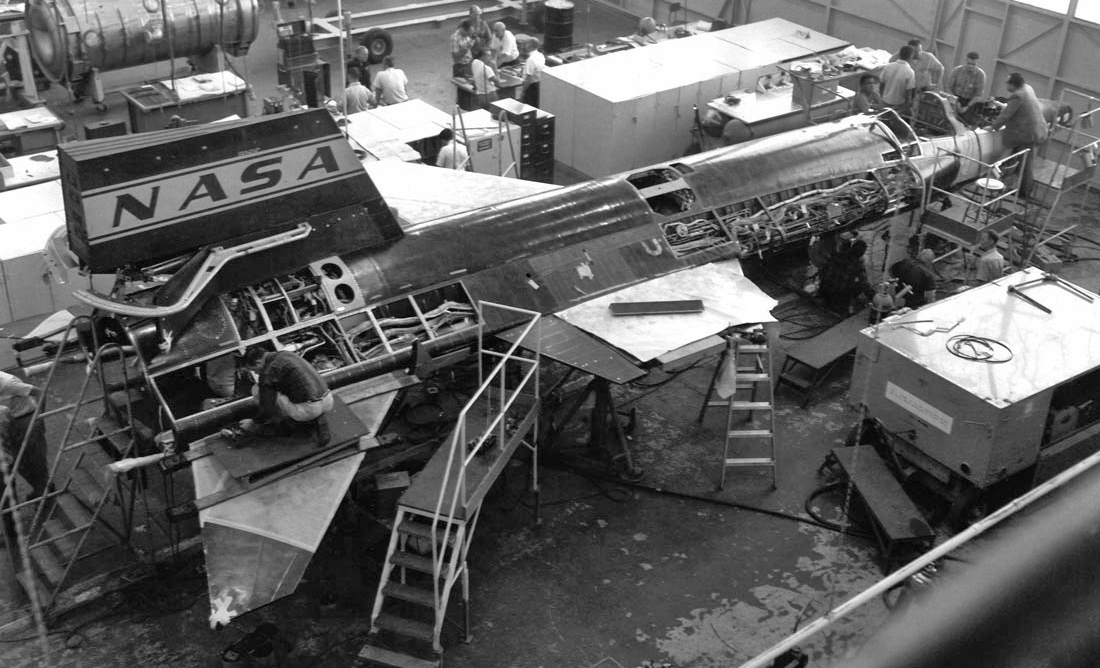 |
||
X-15 no. 2 underwent extensive reconstruction in order to become the advanced X-15A-2. This photo was taken at the North American Aviation Los Angeles Division plant. North American Aviation |
||
 |
||
The X-15A-2 nears completion at North American in early 1964. This image shows the first fit check of the mock-up external tanks to the newly-modified aircraft. North American Aviation |
||
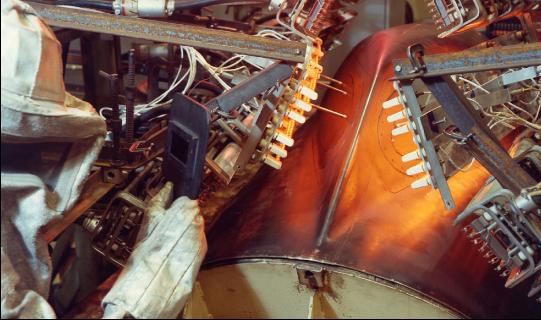 |
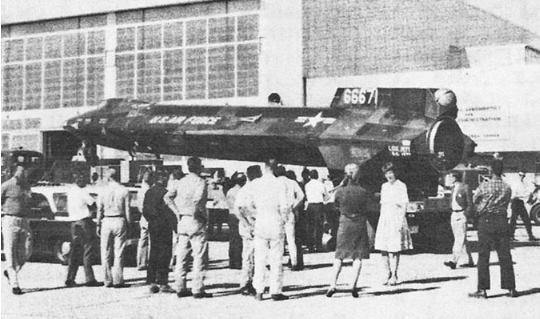 |
|||
The new oval cockpit windows for the X-15A-2 undergo heat testing in 1963. North American Aviation |
The X-15A-2 arrives at Edwards to an excited crowd of onlookers on 18 Feb. 1964. Armstrong Flight Research Center |
|||
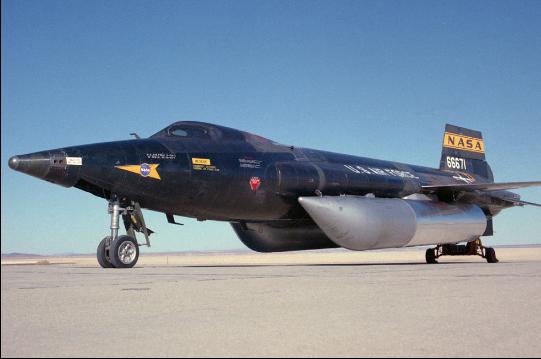 |
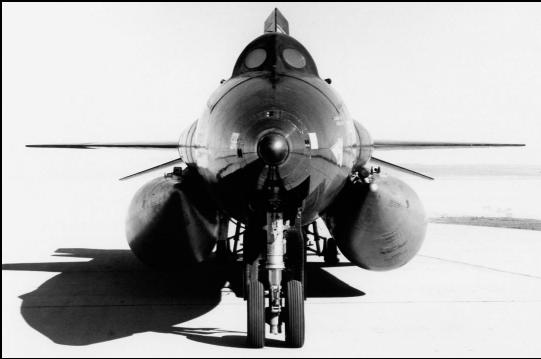 |
|||
The X-15A-2, with external tanks and extended fuselage. North American Aviation |
Nose view of the advanced X-15A-2 in February 1964. North American Aviation |
|||
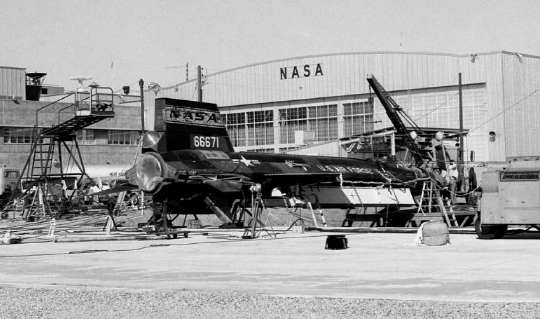 |
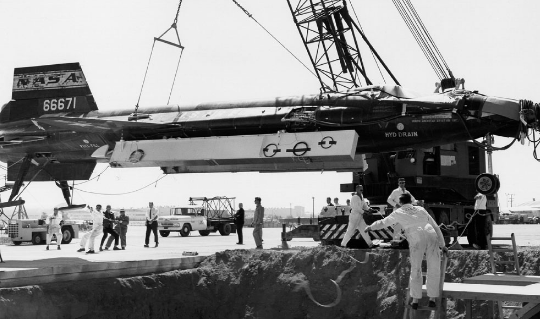 |
|||
The X-15A-2 is poised over the external tank test pit next to the NASA hangar. North American Aviation |
The external tanks were replaced with metal weights to accomplish ejection tests. North American Aviation |
|||
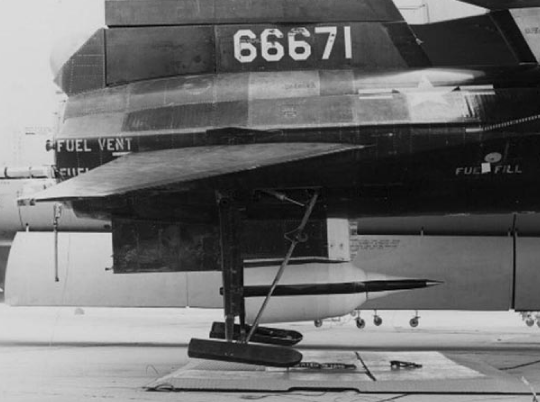 |
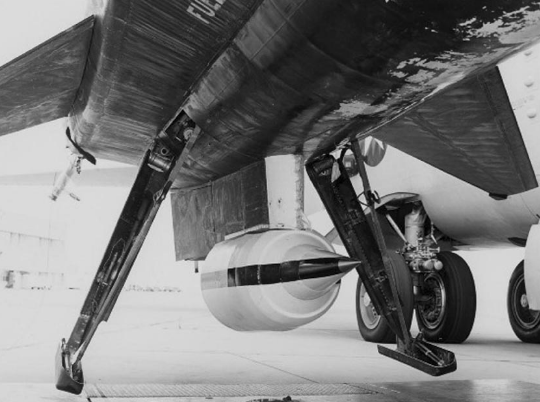 |
|||
One of the major programs associated with the X-15A-2 was testing a supersonic combustion ramjet, or more simply, a scramjet. It was to be mounted to the bottom ventral, and to accomodate it, in case it could not be ejected, the landing skids had to be lengthened. These two photos show the dummy scramjet mounted to the lower tail with the lengthened landing gear deployed. The aircraft is mounted on the B-52 mothership's pylon, in order to faciliate plenty of ground clearance for the test. Armstrong Flight Research Center |
||
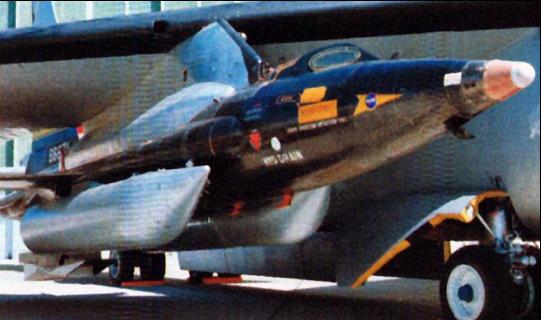 |
||||
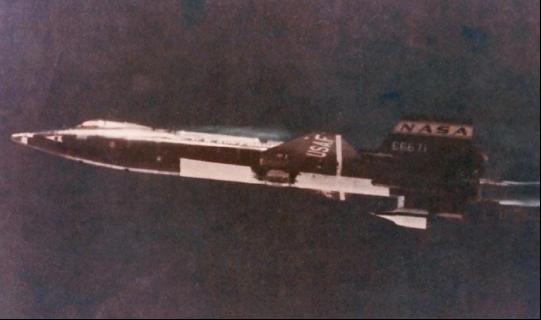 |
||||
The scramjet was first flown by Pete Knight on Mission 2-51-92 on 8 May 1967. Armstrong Flight Research Center |
A dummy set of external tanks were installed to the X-15A-2 for a fit check. Armstrong Flight Research Center |
|||
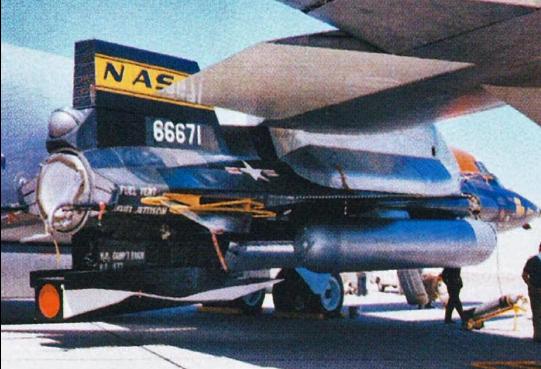 |
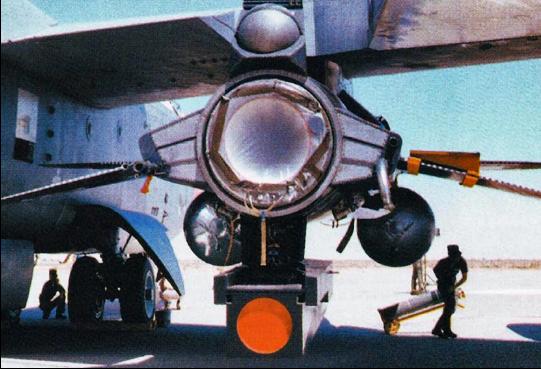 |
|||
Rear side view of the external tank fit check that took place on 19 Jun. 1964. Note the long, rectangular scramjet design mounted to the lower ventral. Armstrong Flight Research Center |
Rear view of the external tank fit check. The orange circle is the rear of the dummy scramjet. In a real version, this would be where the exhaust nozzle is located. Armstrong Flight Research Center |
|||
— First External Tank Flight, 3 November 1965 — |
||
 |
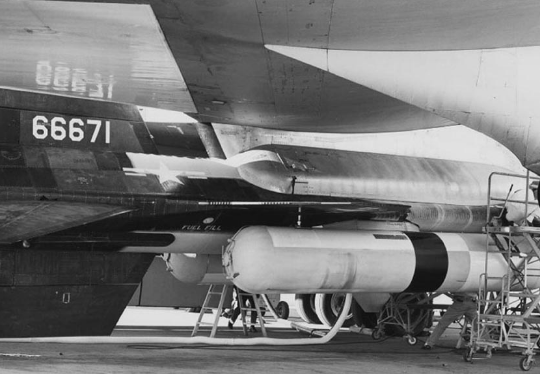 |
|||
Preparing for the first external tank test flight, which used empty tanks, on 3 Nov. 1965. Defense Audio Visual Agency |
The X-15A-2 is locked in place on the wing pylon of B-52 no. 003. Armstrong Flight Research Center |
|||
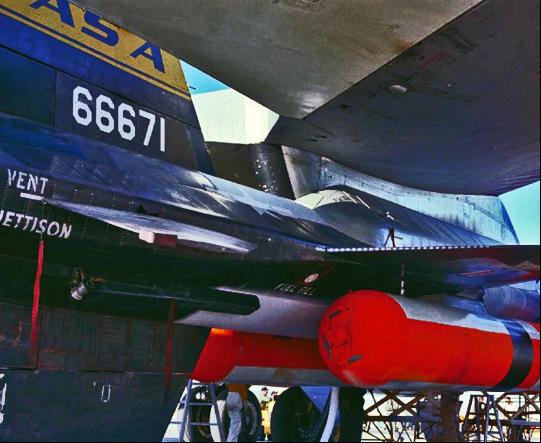 |
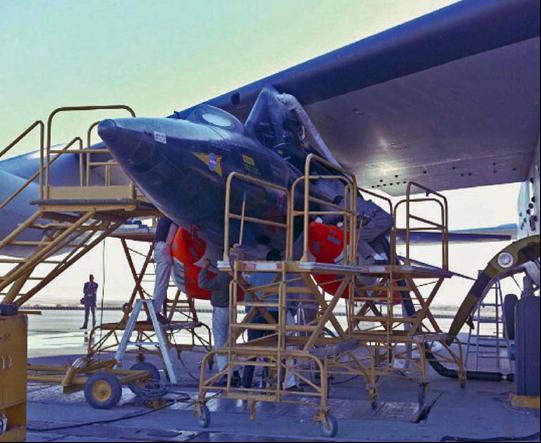 |
|||
Rear and front angles on the X-15A-2 with the empty external tanks in place. Note the work platform near the front of the aircraft, and the stairs for pilot access. Armstrong Flight Research Center |
||
 |
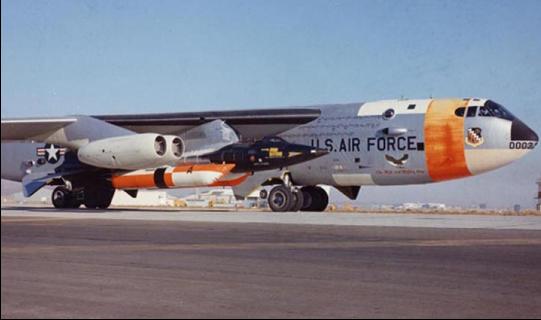 |
|||
Taxiing for takoff of mission 2-43-75 on 3 Nov. 1965. author's collection |
||
 |
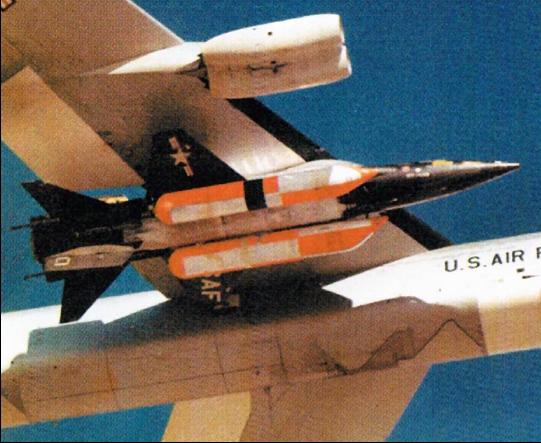 |
|||
Liftoff of B-52 no. 003 with its payload of the X-15A-2 with empty external tanks, and pilot Robert Rushworth. The flight achieved Mach 2.31 or 1,500 mph. Both tanks jettisoned properly, but the left hand liquid oxygen (LOX) tank parachute failed, destroying the tank on impact. This was the only external tank lost during the program. Armstrong Flight Research Center |
||
— Second External Tank Flight, 1 July 1966 — |
||
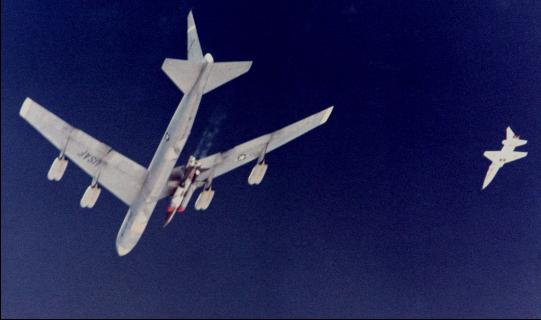 |
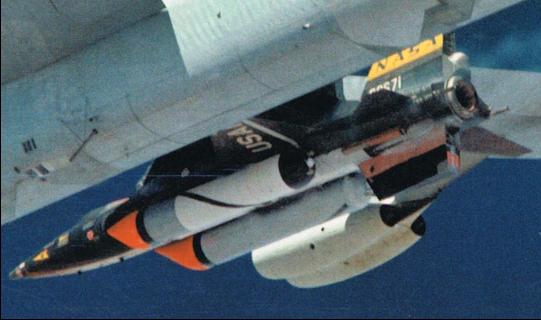 |
|||
Robert Rushworth in the X-15A-2, ready for the first fullly-fueled external tank flight. Mission 2-45-81 on 1 Jul. 1966. B-52 no. 008 was the mothership. Armstrong Flight Research Center |
||
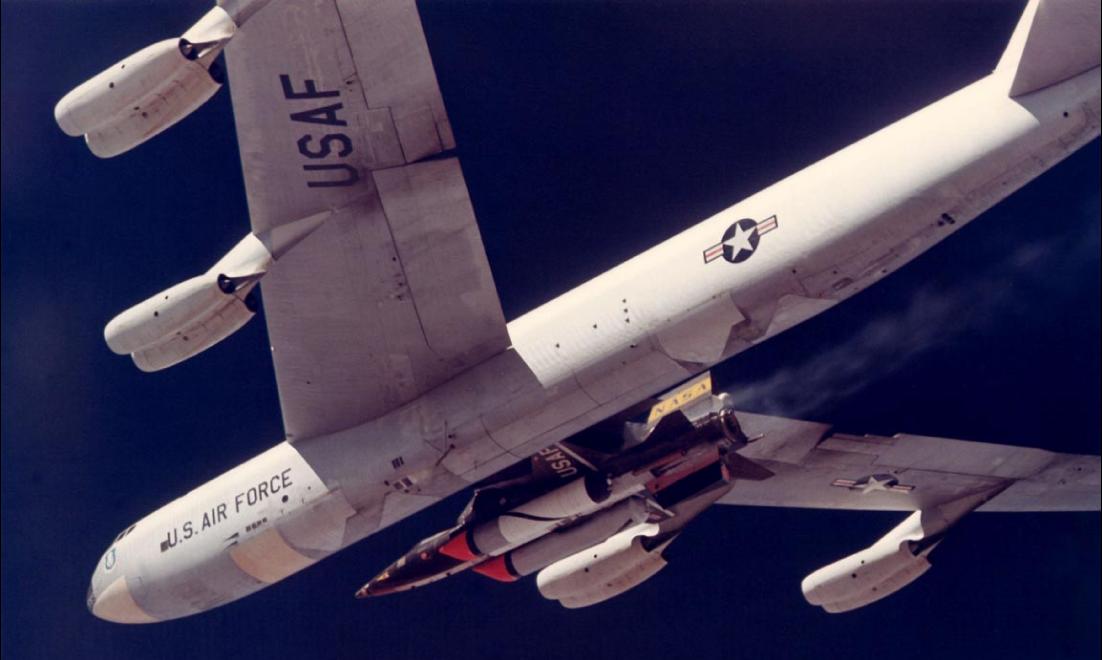 |
||
Scheduled as Rushworth's 34th and final flight of the X-15 program, the launch occurred at 11:02:36.1 am on 1 July near Mud Dry Lake. Armstrong Flight Research Center |
||
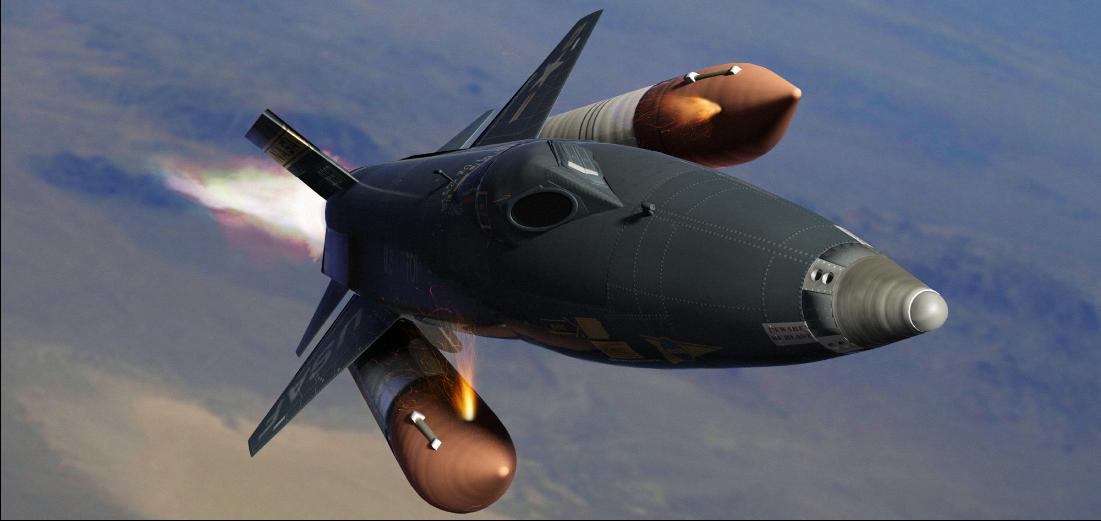 |
||
The moment of external tank separation from the X-15A-2. The tanks were erroneously jettisoned due to a faulty transducer that indicated no fuel or oxidzer was flowing from the tanks to the LR-99 rocket engine. Once the tanks were gone, mission rules dictated an immediate landing. Rushworth expertly brought the X-15 down at Mud Dry Lake. artwork Thommy Eriksson |
||
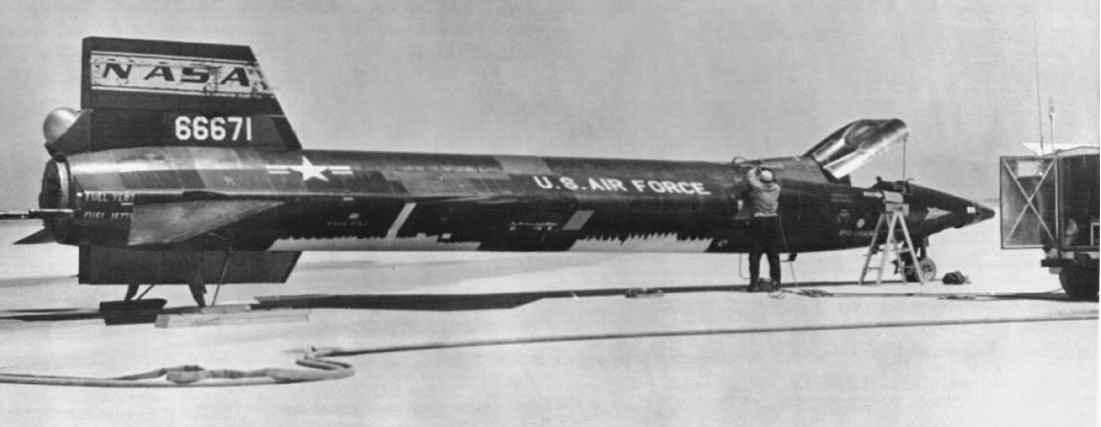 |
||
Checking over the aircraft after the emergency landing. No damage occurred, and Pete Knight took the A-2 aloft again just three weeks later on mission 2-46-83. AP Wirephoto |
||
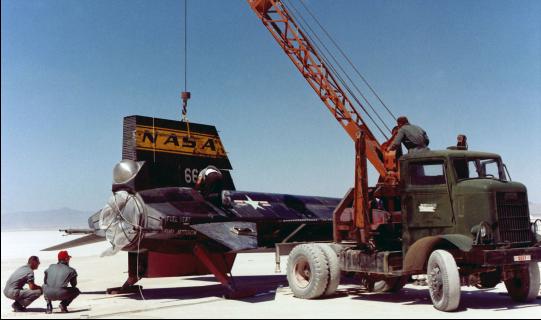 |
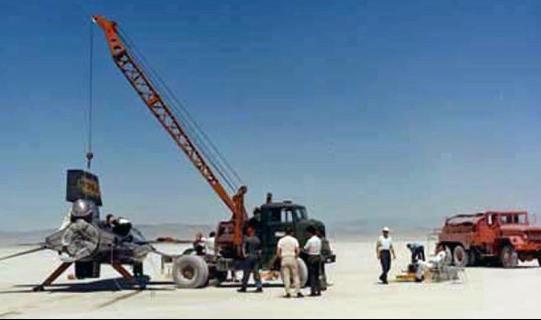 |
|||
The X-15A-2's upper tail is removed by the ground crew at Mud lake before overland transport back to Edwards AFB. Armstrong Flight Research Center |
||
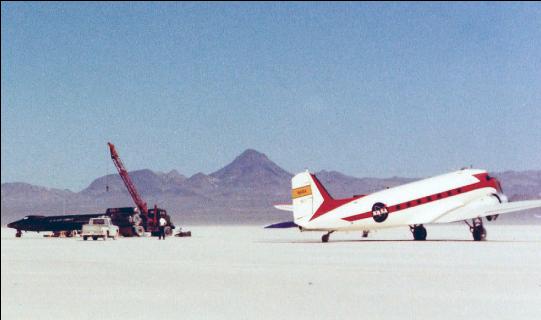 |
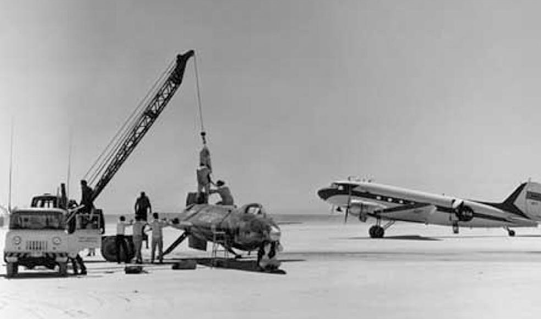 |
|||
The scene at the emergency landing site at Mud Dry Lake, near Tonopah, Nevada. The NASA C-47 that transported crew to the emergency site is seen in both images. Armstrong Flight Research Center |
||
 |
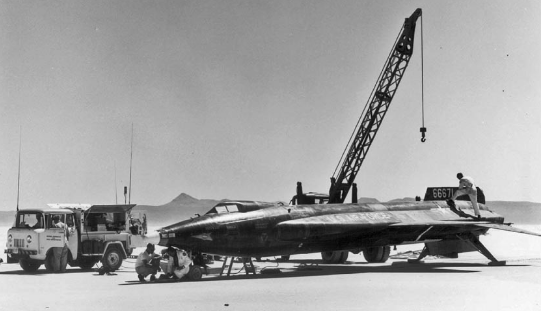 |
|||
More activity surrounding the preparations to bring the X-15A-2 back to Edwards. A C-130 Hercules brought in the crew to do the work. Armstrong Flight Research Center |
||
 |
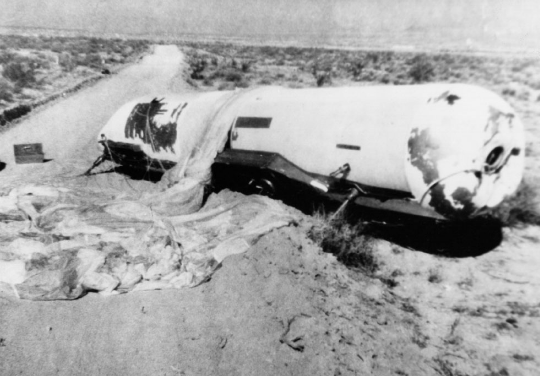 |
|||
Close-up image of the landing skids after the emergency landing. The white stripe from the belly, up onto the fuselgae, then the wing, is a set of camera markings. Armstrong Flight Research Center |
Recovery of an external tank following the emergency ejection. The parachutes failed to separate from both tanks, and they were drug across the ground by the wind. Jim Robertson collection |
|||
Interesting Incident: On the overland return trip from Mud Dry Lake in Nevada to Edwards AFB in California, the driver of a camper got annoyed at being stuck behind the slow moving convoy. He passed by the X-15 at high speed. The wing of the X-15 was at the perfect height so that it opened the top of his camper like a can-opener. He later sued NASA for the damages, but the case was thrown out of court. |
||
— Third External Tank Flight, 18 November 1966 — |
||
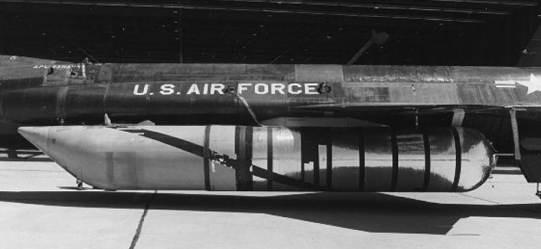 |
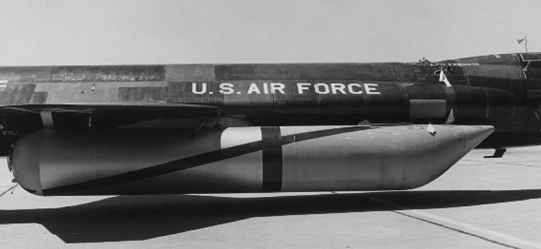 |
|||
The left side external tank was for the oxidizer, (LOX) and the right hand tank was for the anhydrous ammonia (NH3). These photos were prior to flight 2-50-89 on 18 Nov. 1966. This was the first flight for Pete Knight with the external tanks, and the second flight with the tanks full. Unlike the first flight by Rushworth, the tanks worked perfectly, as did the flow sensors, ejection system, and tank parachutes. Knight flew the highest speed to date in the program at Mach 6.33 or 4,250 mph. Armstrong Flight Research Center |
||
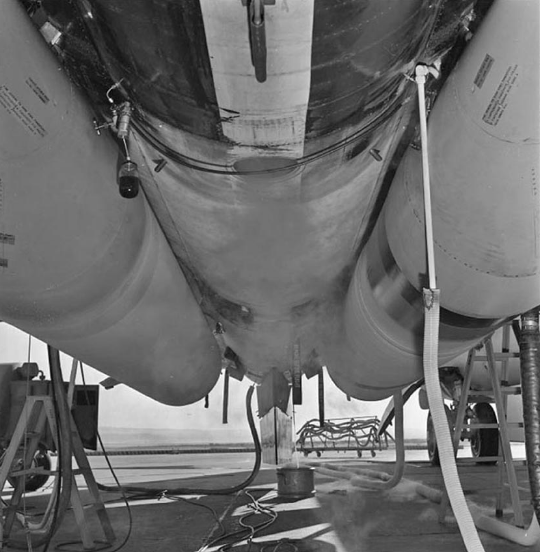 |
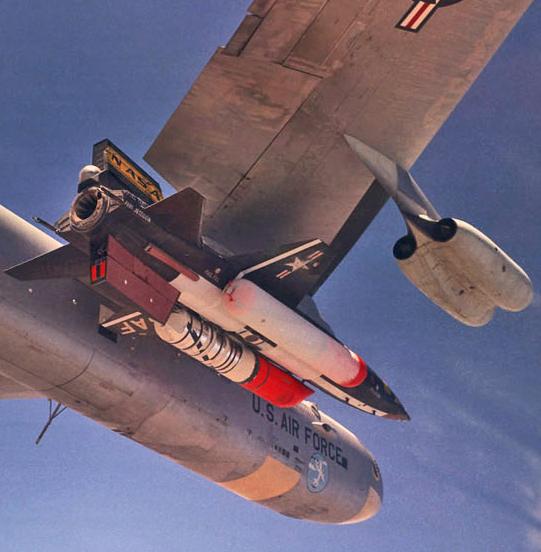 |
|||
The internal and external tanks are covered with frost as they fill with fuel and oxidizer. Armstrong Flight Research Center |
Frost still covers the right hand tank that is filled with anhydrous ammonia fuel. Armstrong Flight Research Center |
|||
 |
 |
|||
Note that the B-52's right wing outrigger gear is deployed in the upper right. Armstrong Flight Research Center |
Test sections of pink ablator material are applied to the lower ventral and landing skid. Armstrong Flight Research Center |
|||
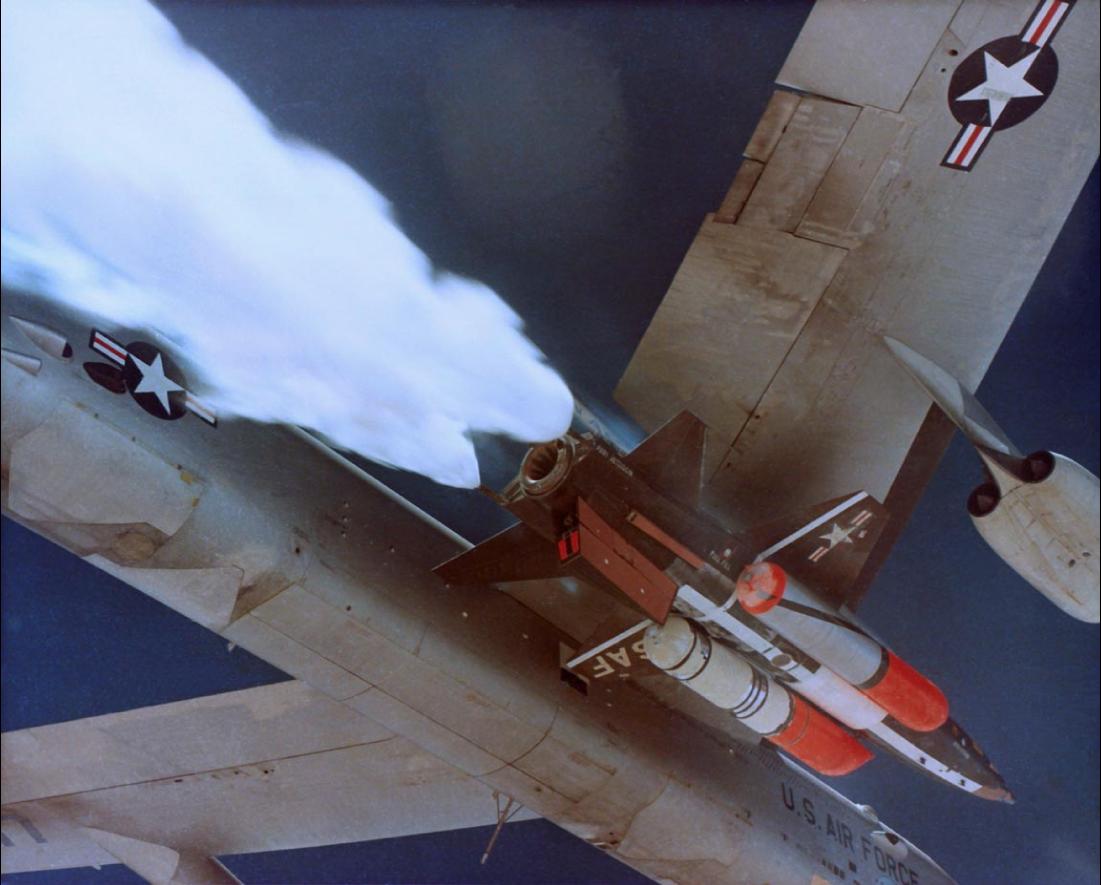 |
||
Just prior to launch the fuel and oxidizer jettison checks verify the system is operational. Armstrong Flight Research Center |
||